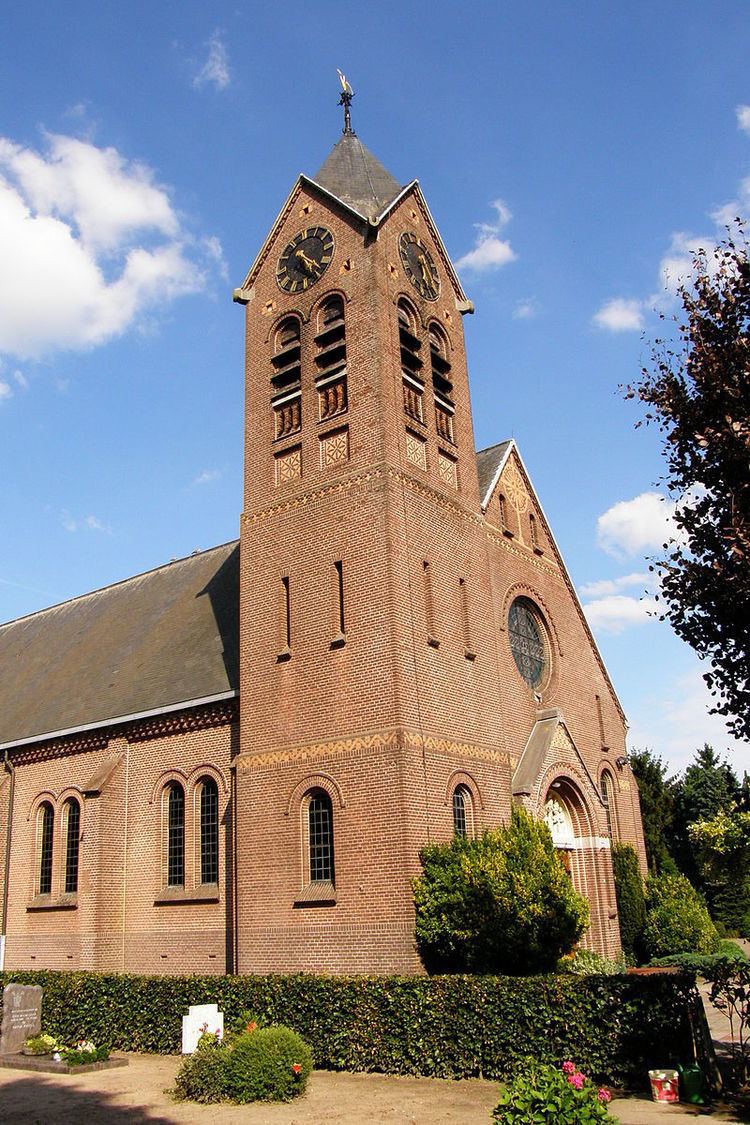Country Netherlands Population 2,600 (1 Jan 2007) | Time zone CET (UTC+1) Local time Monday 6:17 PM | |
 | ||
Weather 18°C, Wind E at 14 km/h, 28% Humidity | ||
Nijnsel (North Meierijs dialect: Nènzûl ) is a village in the province of North-Brabant, located in the Meierij of 's-Hertogenbosch. Nijnsel is a parish of the municipality of Sint-Oedenrode and has around 2,600 inhabitants.
Contents
- Map of Nijnsel Netherlands
- Etymology
- History
- Sights
- Nature and landscape
- Trivia
- Nearby residential communities
- References
Map of Nijnsel, Netherlands
Etymology
The word Nijnsel means reliving. The name of the nearby hamlet Vressel means Old residence. "Sel" being derived from the word "sale", which refers to the largest house in the area which belonged to the local nobleman in the early medieval period.
History
Source:
The hamlets Nijnsel and Vressel on either side of the Dommel river are known to be habituated in prehistoric times. There are archaeological remains of the Bell Beaker culture and also remains of the Roman era were found. There are numerous archaeological monuments which also remain from the Mesolithic era. A settlement from the early Bronze Age, around 1500 BC was excavated in Nijnsel.
Nijnsel originated as a settlement around a chapel which was dedicated to Anthony the Great and was already mentioned in the 15th century. The village traditionally belonged to the ancient vrijheerlijkheid of Sint-Oedenrode and was just as nearby Vressel a hamlet. After the Peace of Münster in 1648, the chapel was closed. The Catholic population used now a clandestine church in a barn in Sint-Oedenrode, while the empty chapel was used as a Protestant school since 1731, after the hamlets Nijnsel and Vressel sent a petition to establish their own school in 1728 to the Council of State of the Netherlands in The Hague. In 1892 the chapel was demolished.
The village Nijnsel includes the possible remains of castle Ten Houte, which is founded in the 15th century and demolished in the 19th century. These remains are located between the Houtsestraat and the Hoogstraat.
Nijnsel continued into the twentieth century as a small linear settlement on the old road between Sint-Oedenrode and Lieshout. Later on the development of the village was further determined by both the construction of the Catholic Church, and by the proximity to the Veghelseweg - Sonseweg (Road to Veghel and to Son). The "Sint Antonius van Padua" Church was inaugurated in 1911 and around the church formed a village. The largest change over the last decades was the arrival of a new neighborhood in the 60s-80s and an industrial area in 1970. Initially, only small-scale and 'clean' companies were admitted at the industrial area. Nijnsel was notorious for the Provincial Road N265 which for years separated the village from the nearby Sint-Oedenrode. Since the opening of the State Highway A50 in 2003, the traffic nuisance has diminished, as the A50 since then passes through a tunnel next to the village. The construction of this highway was accompanied by an expansion of the business area.
Sights
Nature and landscape
East and north of Nijnsel runs the river the Dommel through the Dommel valley. On both sides of it there are some old fields. Further west is a heath reclamation: the Rooise Heath. East of the Dommel more nature can be found:
These three nature areas are located close together and between them some ancient infield can be found, such as small-scale fields. Together these areas form a part of "Het Groene Woud".
Trivia
Nearby residential communities
Sint-Oedenrode, Mariahout, Breugel, Son, Boskant, Zijtaart, Veghel, Liempde, Eerde, Wijbosch, Olland and Schijndel.
